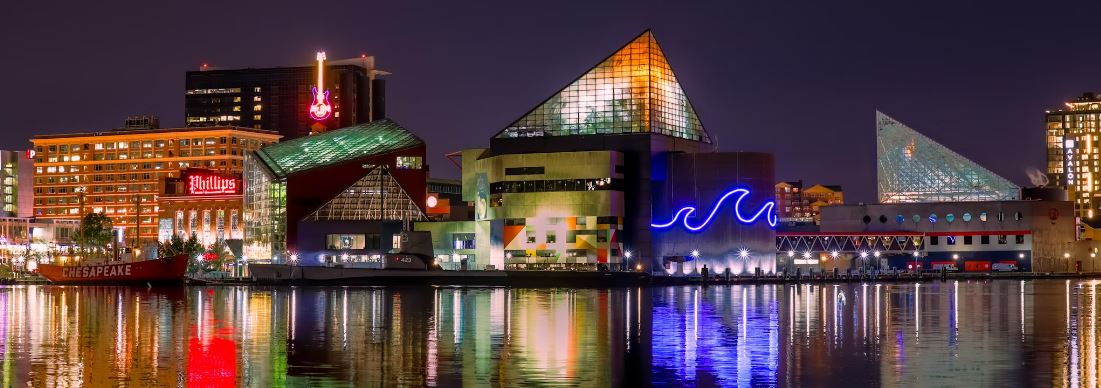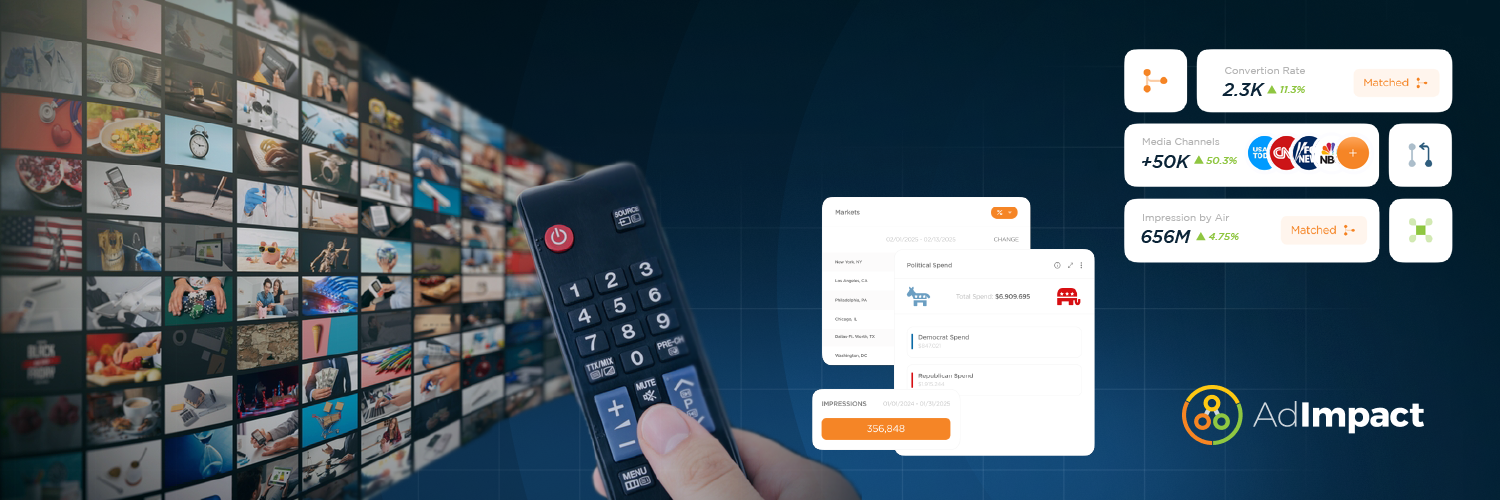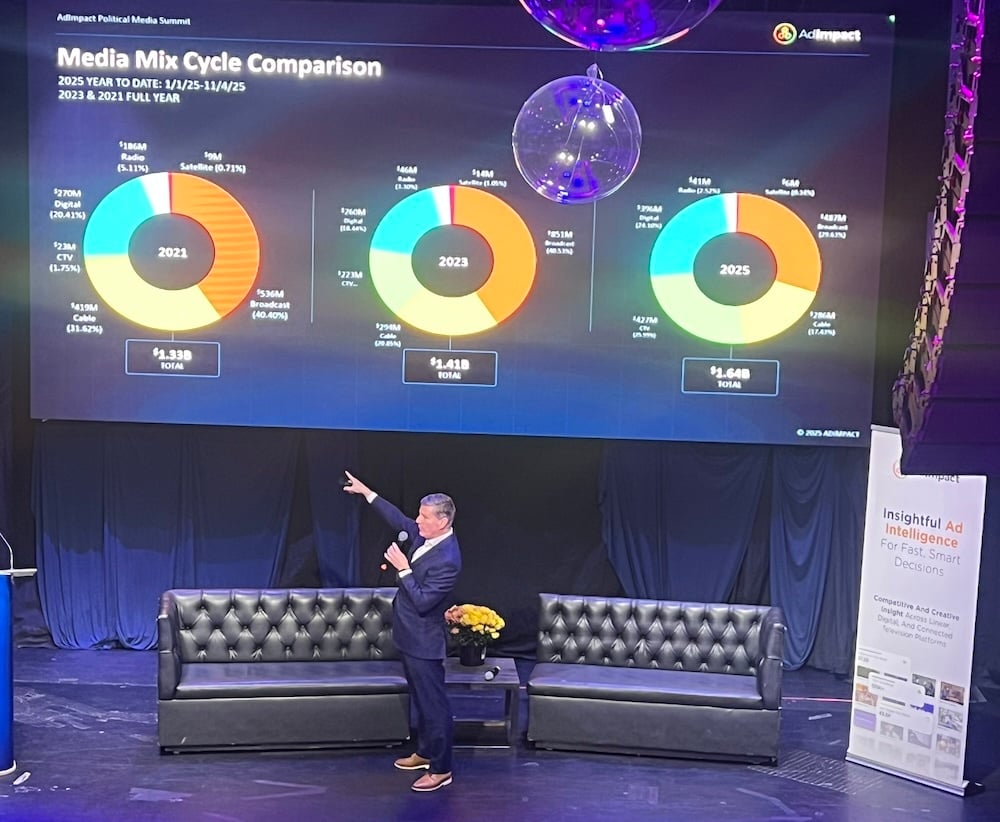Written by Meaghan Walsh and Tim Dias
Maryland and West Virginia host their state primaries today. In both states, well-known Republican Governors are now seeking open Senate seats. The Senate vacancies have created numerous competitive primaries, which make up 58% of the total $129.6M in primary ad spending across the two states. The top three elections by ad spending are Maryland Senate at $59.4M, West Virginia Governor with $34.3M, and West Virginia Senate at $15.6M.
In Maryland, Democratic Congressman David Trone is outspending every other advertiser in all the state’s primaries by a staggering margin. Trone’s $47.5M has dominated the airwaves, accounting for 66% of all primary ad spending in Maryland this cycle and 80% of all Senate spending in the state. Trone’s spending has propelled Maryland’s Senate primary to the second most expensive non-presidential election of the 2024 cycle at $59.4M. Prince George’s County Executive Angela Alsobrooks (D) has the second most ad support in the Senate primary at $6.7M. Despite lagging far behind Trone in ad spending, Alsobrooks has received numerous significant endorsements, a fact she emphasized in a recent ad. In the spot, a host of prominent Maryland Democrats, including Senator Chris Van Hollen, Governor Wes Moore, and former House Majority Leader Steny Hoyer all tout their endorsement of Alsobrooks. The political group Women Vote! has also entered the primary, spending $2.6M on ads attacking David Trone’s connections to “extreme and MAGA Republicans.” A late addition to the Republican Senate primary was former Governor Larry Hogan, who with the NRSC, began airing TV ads less than one month ago, on April 17th. Together, the duo has spent $1.6M in coordinated ads. Republican candidate Robin Ficker’s campaign has spent $3.7M.
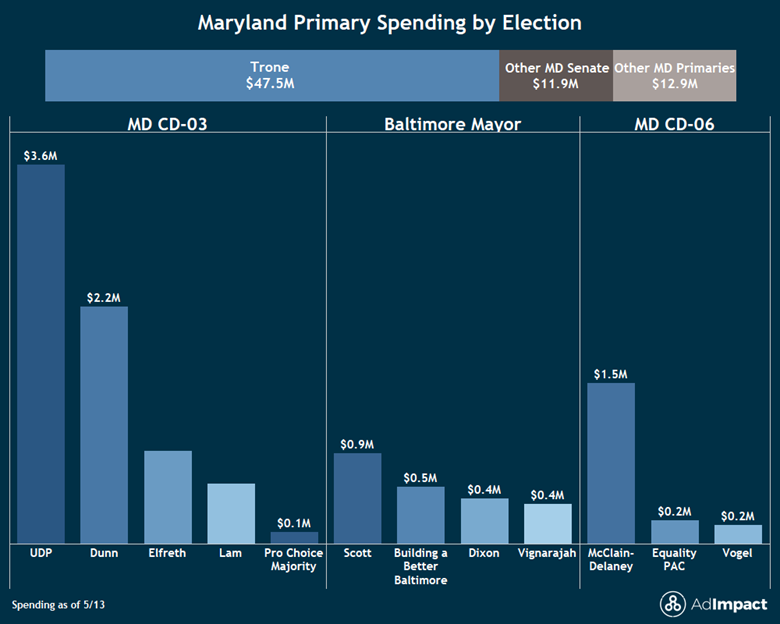
In Maryland’s House Primaries, the state’s Third District has seen significant spending from outside groups. Specifically, the American Israel Public Affairs Committee (AIPAC)-affiliated United Democracy Project (UDP) has spent $3.6M supporting State Senator Sarah Elfreth (D) for Congress. Running against Elfreth in the Democratic primary is Harry Dunn, a former U.S. Capitol Police Officer. In his advertising, Dunn references his experience on January 6th defending the Capitol. Dunn has seen $2.2M in ad support, all from his campaign, compared to Elfreth’s $4.5M in ad support, of which only 19% is from her campaign.
In West Virginia, the gubernatorial primary election has been a battleground for Republicans, with $34.2M spent by GOP advertisers. Attorney General Patrick Morrisey has the largest share of ad support, at $16.9M. Businessman Chris Miller is second with $13.0M in support, while WV House of Delegates member Moore Capito has seen $4.1M in ad support.
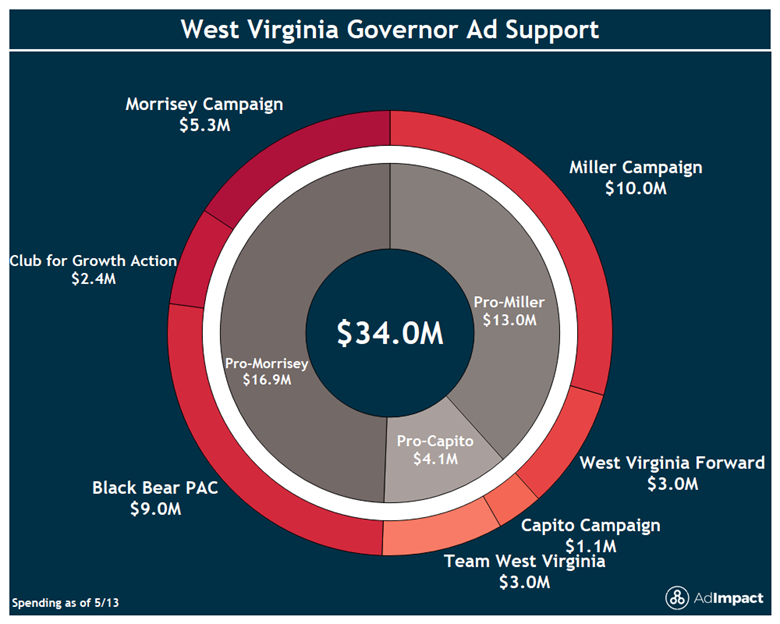
A large faction of Morrisey’s support comes from Club for Growth Action and their allied group Black Bear PAC with a combined $11.5M. Their ads attack Morrisey’s primary opponents, particularly regarding their stances on LGBTQ+ Issues in the state. Meanwhile, West Virginia Forward, an outside PAC supporting businessman Chris Miller, has spent $3.0M in ads hitting back on Morrisey’s own LGBTQ+ policies. Gubernatorial advertisers have spent $4.9M in the Washington DC market and $2.1M in the Pittsburgh market. The top issues mentioned in TV ads were Donald Trump, LGBTQ rights, and lobbying.
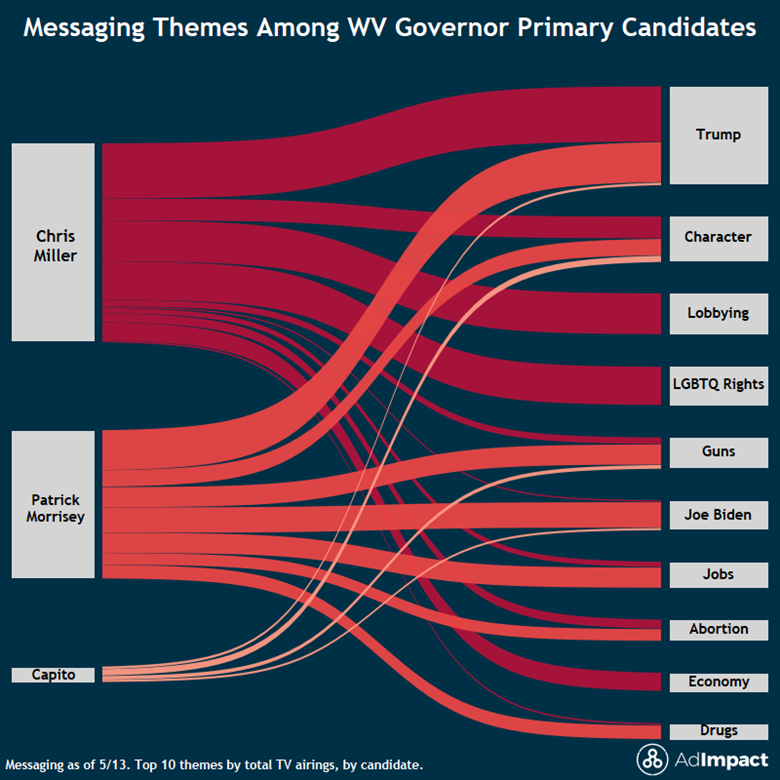
Beyond the Governor’s race, the second most expensive WV primary is for the open Senate seat following incumbent Democratic Senator Joe Manchin’s retirement announcement. Looking ahead to November, West Virginia is rated as a Safe Republican seat by Cook Political Report, likely flipping the seat. This primary has seen $15.6M in political ad spending with WV Governor Jim Justice garnering the largest ad support at $6.0M, followed by Congressman Alex Mooney at $2.9M. In their ad messaging, Justice highlighted his endorsement from Donald Trump while Mooney focused on Justice’s voting record.
Overall, Maryland and West Virginia have seen a historic increase in political ad spending as vacancies leave room for both establishment candidates and political newcomers alike to compete. Maryland has seen a 4,000% increase in Senate primary spending from 2022 to 2024. With Larry Hogan entering the race, the seat will likely be a focus for Republicans and Democrats alike this cycle. As such, AdImpact will continue to track political ad spending trends as we approach election day.
For insights on last week's primary contests in Indiana, read our blog here:


